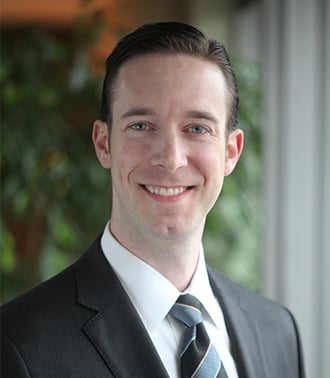The Attorney-Client Privilege Under Scrutiny at the Supreme Court
Lawyers wear many hats. In addition to offering legal counsel, lawyers frequently are called upon to give non-legal advice, often for the same client and often within the same communication. These dual-purpose communications—wherein legal and non-legal purposes intertwine—and whether they are shielded by the attorney-client privilege, lie at the heart of In Re Grand Jury, argued Monday at the United States Supreme Court.
The case involves the compelled disclosure of communications between the Petitioner—a tax-focused law firm—and its client, who sought advice on the tax consequences of expatriation. In addition to advising the client on tax code compliance strategies—services that both sides agree fall squarely in the “legal” arena—the firm assisted in preparing the client’s tax returns, an arguably non-legal service. A number of communications between the firm and client served both legal and non-legal purposes.
When, pursuant to a federal criminal tax investigation, a district court in California compelled the production of these communications to a grand jury, Petitioner refused to turn them over, invoking the attorney-client privilege, and was held in contempt. Petitioner appealed this contempt order to the Ninth Circuit, which affirmed the district court.
Now at the Supreme Court, the case presents three competing approaches to the attorney-client privilege as applied to dual-purpose communications.
- The Primary Purpose Test: This is the test embraced by the government, applied by the Ninth Circuit and (as the government’s brief points out) adopted by the majority of circuit courts to consider the question. It calls on courts to “evaluate all of the purposes for . . . a communication to determine the single primary purpose,” and to treat the communication as privileged “only when that one primary purpose is legal advice.” Pet. Br. 2 (emphasis added). Under this approach, legal communications that simultaneously address non-legal matters (like business concerns) are shielded only if the legal matters predominate. If the legal matters constitute merely a secondary purpose of the communication, the entire communication may be subject to disclosure. This threat of disclosure, Petitioner’s brief contends, erodes the free and candid flow of information between lawyer and client that “is a cornerstone of the American legal system.”
- The Significant Purpose Test: This test, urged by Petitioner and most prominently expounded upon in a 2014 D.C. Circuit case authored by then-Judge Kavanaugh, In re Kellogg Brown & Root, Inc., 756 F.3d 754, acknowledges that some communications may substantially involve both legal and non-legal purposes. Where this is the case, the attorney-client privilege attaches where “solicitation of legal advice was one of the material purposes of the communication.” Id. at 760 (emphasis added). This approach relieves judges of having to determine the principal purpose for a communication, but, as the government cautions, ultimately could shield non-legal content that would not otherwise be privileged. Accordingly, the government argues that the Kellogg approach, if adopted at all, should be narrowed to circumstances in which a communication’s legal and non-legal purposes are essentially in equipoise, such that no one purpose predominates. US Br. 5.
- Dual-Purpose Tax Communications Never Privileged: Under a rule derived from Seventh Circuit authority, see United States v. Frederick, 182 F.3d 496, 501 (7th Cir. 1999), dual-purpose communications made in the tax context are never privileged. Such a rule discourages invocation of attorney-client privilege simply because a taxpayer can afford to retain an attorney, rather than just an accountant, to prepare tax filings. Pet. Br. 28-29. Though the government does not argue for this rule in its Supreme Court brief, it featured in both the government’s Ninth Circuit argument and in its brief in opposition to certiorari. Petitioner’s merits brief argues that a subject-matter-specific carveout to the privilege would be unworkable, and that the Court “has never embraced different attorney-client privilege rules for different substantive areas of law.” Pet. Br. 29.
At oral argument in the Supreme Court on January 9, 2023, the Justices seemed wary of adopting the Petitioner’s preferred Significant Purpose Test, which Justice Kagan characterized as “a big ask.” Much of the questioning of Petitioner centered on whether judges genuinely struggle to ascertain a communication’s primary purpose. Though Petitioner’s brief argues this is an “inherently impossible task,” several Justices pointed out that it is nonetheless a task that judges have ably undertaken for many years. Justice Sotomayor emphasized that judges often are meticulous in segregating privileged from discoverable material, sometimes even at the level of individual sentences. And Justice Kagan observed that Petitioner leans heavily on one recent case, Thompson v. Polaris, Inc., 967 N.W.2d 397 (Minn. 2021), for the proposition that judges struggle to determine a communication’s primary purpose, but neglects ample caselaw suggesting that judges typically manage just fine. Jokingly citing an “ancient legal principle,” Justice Kagan asserted, “if it ain’t broke, don’t fix it.”
The Justices’ skepticism towards the Significant Purpose Test indicates that they may be inclined to treat dual-purpose communications as privileged only where the legal purpose predominates. But it was less clear at oral argument if the Justices would embrace a narrowed version of the Significant Purpose Test, derived from Kellogg, in instances where legal and non-legal purposes are in equipoise. The government conceded that it would accept such an approach in those instances, allowing that “a tie goes to the runner.” But Justice Barrett observed that, because the burden always lies with the party invoking attorney-client privilege, a tie-breaker is unnecessary. Failure to meet the burden, as is the case in a “tie,” means the privilege does not apply.
Save for Petitioner’s brief rebuttal, the oral argument did not reference the third approach, which would deny the privilege to any dual-purpose communications in the tax context. Based on trends in the questioning, it seems unlikely that the Court will settle on this subject-matter-specific exception to the attorney-client privilege.
Practical Implications
Though an opinion in In Re Grand Jury will not arrive until later this Term, attorneys should remain careful about mixing legal and non-legal advice in communications with clients. Clearly, segregating legal from non-legal advice may help protect that legal advice from disclosure in the event of litigation or government investigations.
It is possible that the Supreme Court ultimately will take a hybrid approach, endorsing the Primary Purpose Test but allowing the privilege to prevail where the legal purposes of a communication are in equipoise with the non-legal purposes. But such instances would, by definition, be rare. And because such a determination still would be left to the discretion of a judge, cautious attorneys nonetheless should segregate legal advice from non-legal advice.
As for dual-purpose communications that are truly inextricable, lawyers may wish to inform their clients of the risks that such communications may one day be subject to disclosure.
If you have any questions about In re Grand Jury or the attorney-client privilege, please feel free to contact the authors or any of their colleagues in Arnold & Porter’s White Collar or Securities Enforcement practices.
* Austin Reagan contributed to this blog. Mr. Reagan is a graduate of Yale Law School and is employed at Arnold & Porter's Washington, DC office. Mr. Reagan is not admitted to the practice of law in Washington, DC.
© Arnold & Porter Kaye Scholer LLP 2023 All Rights Reserved. This blog post is intended to be a general summary of the law and does not constitute legal advice. You should consult with counsel to determine applicable legal requirements in a specific fact situation.



